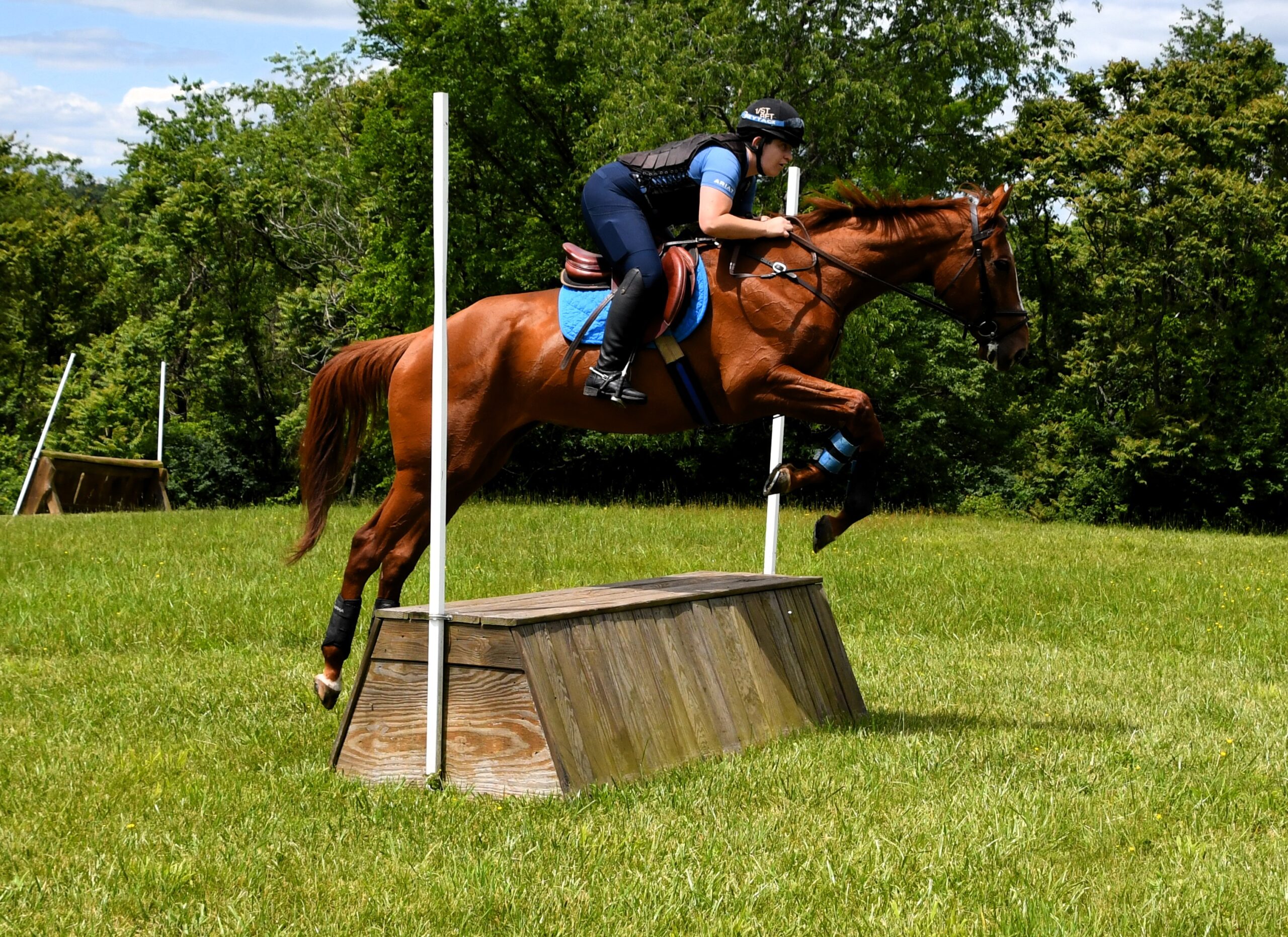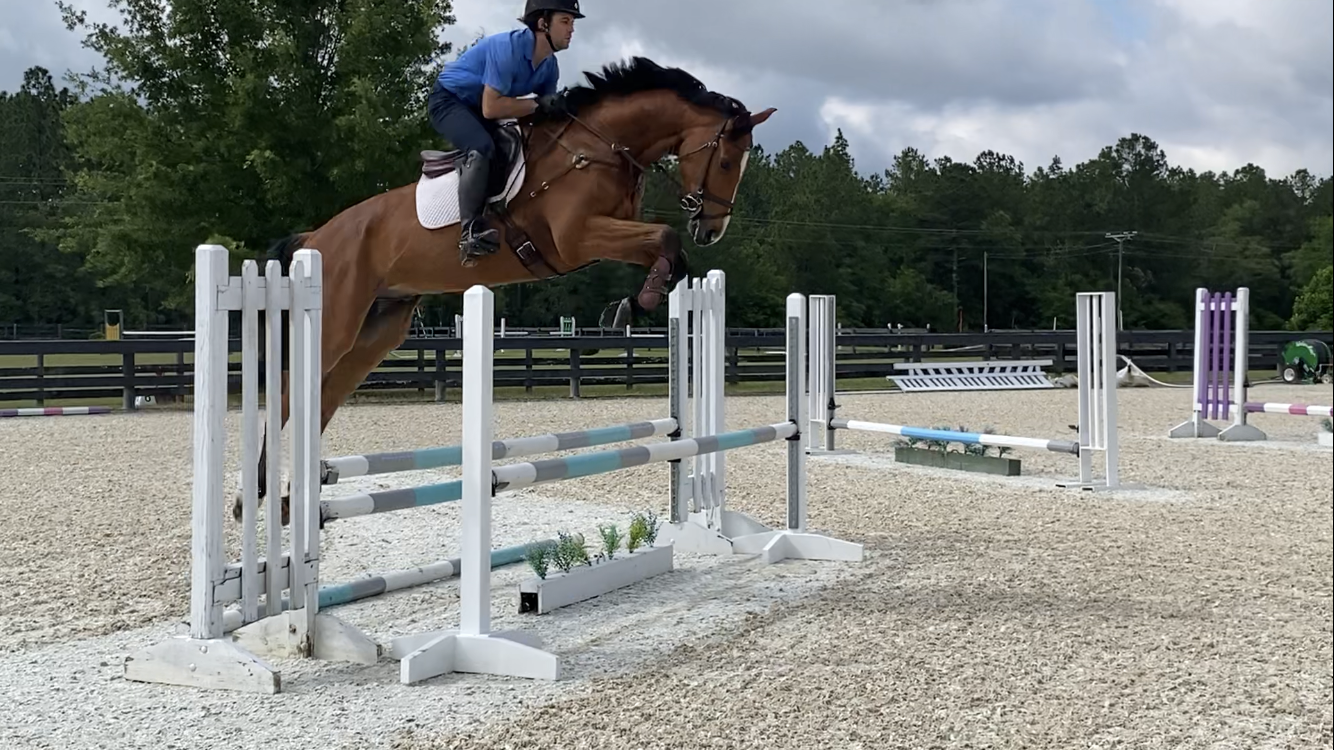EN reader Aubrie Porcelli attended Mark Todd’s invitation only clinic in Canada this weekend. Toddy was in the land of the cold for the indoor eventing at the Royal Winter Fair last week, where he finished 3rd on Charley Farley, and then Mark taught a clinic over the weekend. Aubrie was kind enough to provide Eventing Nation with a fabulous clinic report, which I believe is our first ever clinic report to include diagrams. Thanks for the clinic Mark, thanks for writing this Aubrie, and thank you for reading.
—-
From Aubrie:
Canadians were thrilled to enjoy a two-day clinic with eventing World Champion and Olympian Mark Todd in Orangeville, Ontario this past November 6th and 7th. The clinic was held as part of a fundraiser, organized by local veterinarian and eventing enthusiast Dr. Usha Knabe and hosted by Hockley Valley’s Ghostwood Farm. Money raised was donated to the Youthdale Treatment Centre Riding Program. (Mark also rode in the Indoor Eventing competition at the Royal Agricultural Winter Fair in Toronto the same weekend, where he placed 3rd on a borrowed horse.)
The riders that participated (by invitation only) included Canadian talent such as; Nicole Parkin, Michelle Mueller, Karl Slezak, Ian Roberts, Selena O’Hanlon, Kendal Lehari, Penny Rowland and Pan Am gold medalist Jessica Phoenix (to name a few!)
Flatwork:
The riders prepared by doing simple walk-trot-canter and transitions during their independent warm-up. Once Mark took over, riders were asked to work on upward and downward transitions, specifically walk-canter and canter-walk.
- For several horses that were cantering with their haunches in, he asked them to work on their counter-bend to the outside to encourage the shoulder inwards (versus attempting to push the hindquarters out).
- Riders were told to always be aware of how they were positioning the horse’s head/neck/shoulders in the direction they were traveling.
- For horses that fell into downward transitions, riders were told to keep the hip angle open and leg on. Allowing the horse to execute flat transitions is incorrect, so riders need to repeat the transition until correct. “Let [the horse] know with your leg what you want them to do [in preparation for canter].” Apply a stronger aid (even if you get an overreaction) and repeat the transition until you get the responsive reaction (then reward). “The downward transition must have energy!”
- Be quick to reward, and quick to correct! Even a simple pat means a job well done. The horse will learn to ignore you if you constantly correct but never reward.
- Horses that were inattentive (focused on the audience, not the rider) were worked in a shoulder-in, with collected/extended canters and with varying circles to keep their focus on the rider. The horse was also sent forward off the leg (energetic/extended pace), and then back (into a more collected rhythm) and repeated.
- Once the horse has done well, reward by allowing them to stretch through the back and neck (without completely losing the contact, keep a feel of the mouth).
“It’s all about setting the speed that you want to go at, learn that speed and then sticking to the rhythm.”
GOAL: “[To] get a reaction where you can feel the response in your hand.” Horses that do this in their flatwork will be adjustable and responsive while jumping courses and on cross-country.
Over Fences:
Horses were started over fences by cantering a small gymnastics (less than 2′ for the verticals and less than 3′ for the oxer) to start. The initial gymnastic included:


-The 2nd pole in the exercise progressed to a small (6″-8″) caveletti for the horses to bounce over immediately upon landing after the 2nd vertical
-The poles were later removed, and the exercise progressed into an ascending gymnastic.
When a horse ran through the gymnastic, once the ground lines were removed, Mark instructed the rider to walk after landing and then rein back a few steps. If the horse continued to run through the gymnastic despite increased fence size, he created guide poles in a “V” shape to give the horse something to think about. (Instead of guide poles, he also used objects such as a blue rain barrel or someone’s jacket and placed it in the center of the fence to teach the horse to respect the top rail!)
“This exercise will help [the horse] to start thinking about where his feet are.”
-The next exercise was a gymnastic with four oxers, each equally spaced one stride apart with a canter pole on the ground in between. Once the horses did the initial exercise, it was increased into an ascending gymnastic.
For horses that tending to hang in the air, he instructed the riders to follow the mouth with the hand and keep the leg on. It encourages “forward” through the exercise when the supportive leg is added.

Finally, riders had to put it all together with a course that emphasized adjustability and precision. The different groups did different courses (with some groups, both exercise 1 & 2 were added into the course whereas other groups did not).

The course illustrated incorporated the first gymnastic, minus the ground poles. This is the course demonstrated in the video with Karl Slezak and VDL Ulando.
(Sidenote: it was wonderful to see Canadian Olympic medalist [’56 and ’68] Jim Elder in the crowd!)
Mark was a gracious, knowledgeable and above all else consistent in his instructions. His dry humor did show itself from time to time, but for the most part his teaching was direct and workmanlike. Riders were expected to identify any obvious issues in their horse or work.
During the lunch break, he did “entertain” the group by riding a very athletic young mare over fences. It was fascinating to watch him deal with “young horse” issues (ie, paying more attention to the audience than his aids) in a very methodical way. As per his instructions, his corrections to the mare while riding were instantaneous as was his praise. It was a pleasure to watch!
Mark was a gracious clinician, putting up with tactless photo op requests from groupies (see above). What a good sport! He is welcome (invited!) to come back and work with our Canadian riders any time. Thank you Mark for a fabulous clinic.
—-
If you have clinic reports this winter that you would like to share with Eventing Nation please send them to [email protected].






















